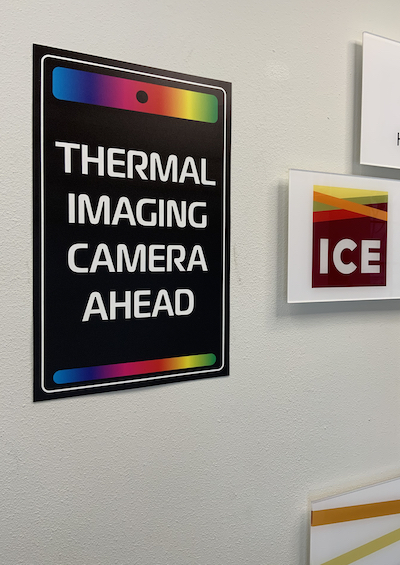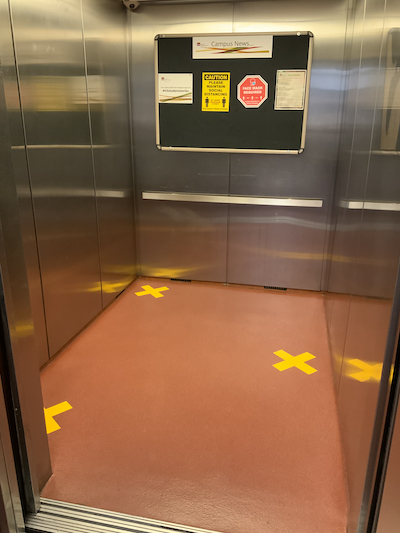After more than three months closed because of the coronavirus pandemic, our Los Angeles campus is set to reopen. Current students return on Tuesday, June 30, and we will welcome new students on Monday, July 6. Here is an overview of some of the new health, sanitation and safety protocols we have implemented.
The Institute of Culinary Education is excited to announce its plan to reopen in LA, implementing CDC guidelines for schools. “The City of Pasadena recognizes that our school teaches a skill set that is considered to be essential — restaurants are essential businesses,” explains LA Campus President Lachlan Sands. “The school fell into that essential business role because what we teach is essential.”
An ICE education has always included how to safely navigate a professional restaurant kitchen, and the current challenge restaurants face is part of that education. Students will be entering an industry with increased safety measures and operational guidelines that they'll practice on campus.
“We want to make sure we are emulating what’s going on in the industry,” Chef Sands says. “What’s happening is social distancing in the kitchen, facial coverings, glove usage, far more sanitizing and attention to cross-contamination to reduce risk.”
Here are a few of the concrete ways ICE LA has enhanced everyday practices on campus.
Mandatory Masks
Firstly, masks are required to be worn by everyone on campus. “If your mask is decorated, interesting or cool, by all means, individualize your mask,” Chef Sands says. "All of mine are Hawaiian-themed." The only requirement is that students wear clean, washable masks every day. The school will provide a single-use, disposable mask for the day should a student forget or misplace their mask.
Staggered Start Times
Classes will continue in morning, afternoon and evening sessions; however, each class arrival time will depend on which kitchen is assigned. “The classes nearest to the [main] front door will start 15 minutes earlier,” Chef Sands says. “For example, if you’re in M-109, or M-213 on the 2nd floor, your class will start 15 minutes early (7:15 a.m., 11:45 a.m., 5:45 p.m.), the next classroom down will start on time (7:30 a.m., 12 p.m., 6 p.m.), and the furthest classrooms down [the hallway] will start 15 minutes later (7:45 a.m., 12:15 p.m., and 6:15 p.m.).” The main purpose of staggering class times is to avoid any backlog of students waiting for their health screenings.
Designated Entrance/Exit
Previously, the campus had two main entrances and exits: the front door at 521 East Green Street and the north entrance/exit leading to the parking structure. That has changed. “There is only one entrance to the school and that is through the main front door that walks you through the lobby,” Chef Sands says. That means the previous entrance from the parking structure is no longer an option. The additional entry points leading from the west stairwell and the westernmost entrance to the building at the corner of South Oakland Avenue will serve as exits only.
 Daily Health Screening
Daily Health Screening
Upon arrival at the front entrance, students and staff must proceed through a daily health screening. Those with no symptoms or exposure will continue through the one-way hallways to their assigned classroom. Along the way, a new, state-of-the-art thermal imaging camera will take temperatures in real time. It will alert the school of any elevated temperatures to prevent exposure on campus.
Precautions and Social Distancing
Stoves have been distanced to keep stations separate in the kitchen classrooms. The floors are also marked so that students have guidelines as to where to stand during demos or where to remain when they are cooking. “Our kitchens are large enough for classes, but we have limited the size of our classes to ensure that social distancing remains relatively easy,” Chef Sands explains.
Students will notice some structural additions like Plexiglas wherever employees and students normally work across from one another and where instructors talk to students about products or student food.
In addition to the copious signage reminding everyone to practice social distancing and good hygiene, hand sanitizer is available throughout the building, and all high-touch surfaces will be cleaned throughout the day, including in the restrooms.
 Traffic Flow
Traffic Flow
All of the hallways in the building have become one-way. The only exception is when heading to the restrooms on the ground or second floor. When students finish with class, they will head down to the other end of the hallway from which they arrived, down the stairs and to the street. Students on the ground floor will head to the western exit that leads to E. Green St. and the corner of S. Oakland Ave.
The stairwells are also one-way. The easternmost stairwell, closest to the front entrance, is only for ascending. That means you can go from the ground floor to the second floor and the second floor to the third using the main stairwell. The descending stairwell is on the west end of the building. You can go down from the third floor to the second, ground and the street exit.
The elevators also have new guidelines, including a capacity of three people in the main elevator and two people in the elevator on the west side of campus.
Current students returning to campus will spend time learning these new processes and procedures on the first day back. New students will review the protocols during orientation on Monday, July 6.
Students can follow updates and online events @iceculinary, and aspiring students can explore career programs at our Los Angeles campus.




